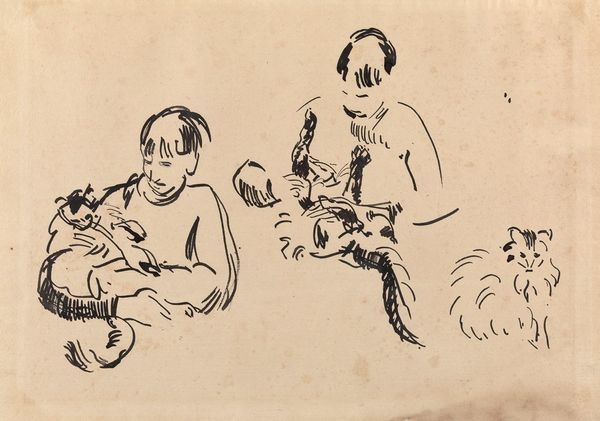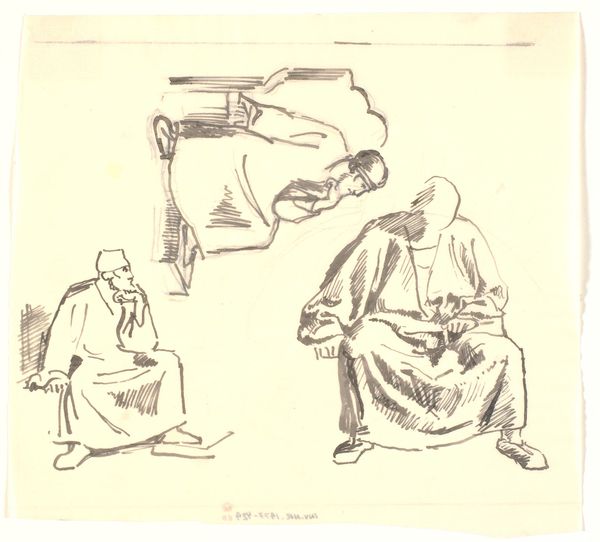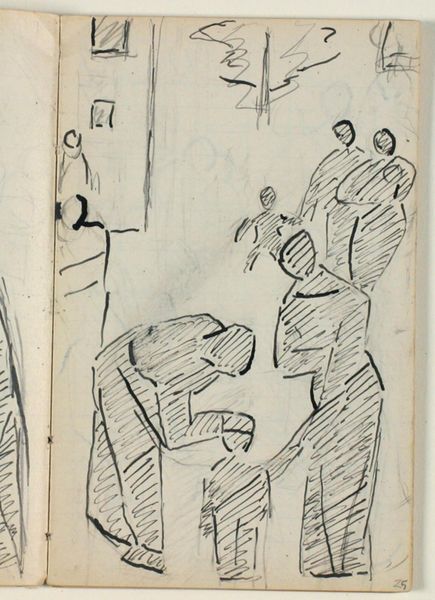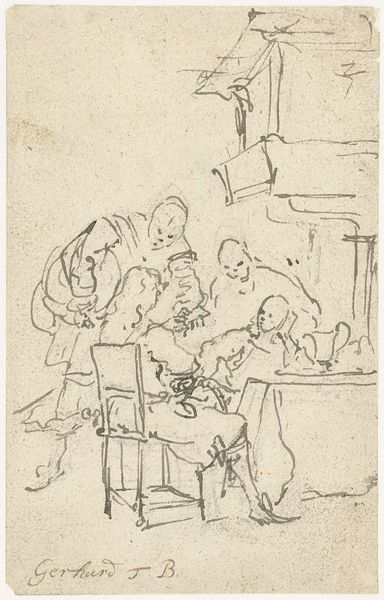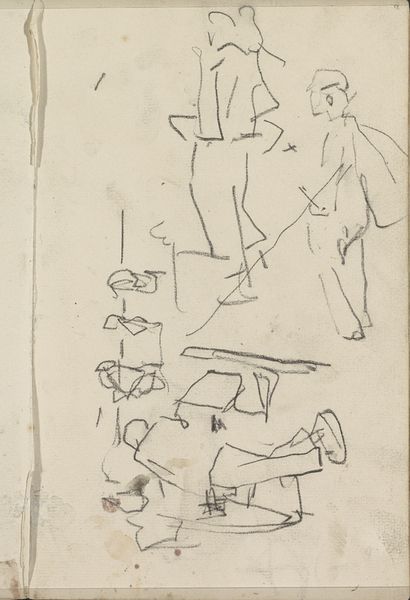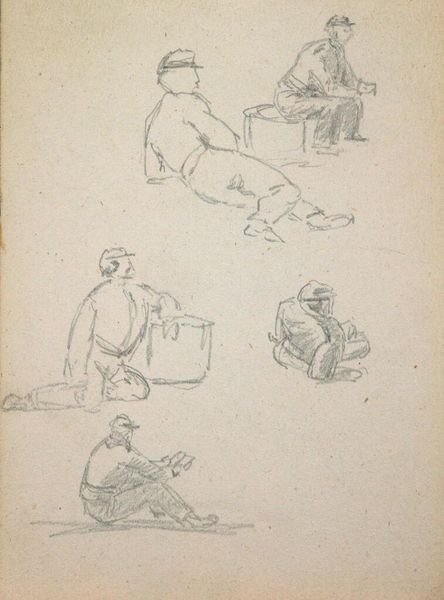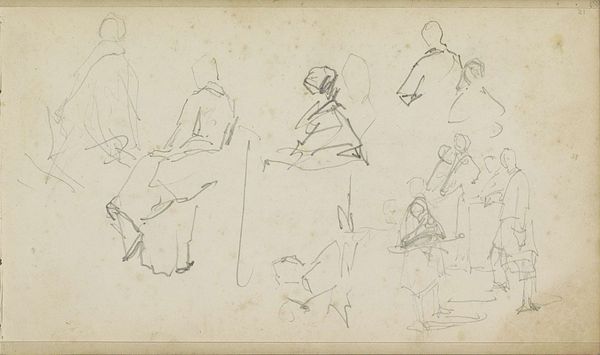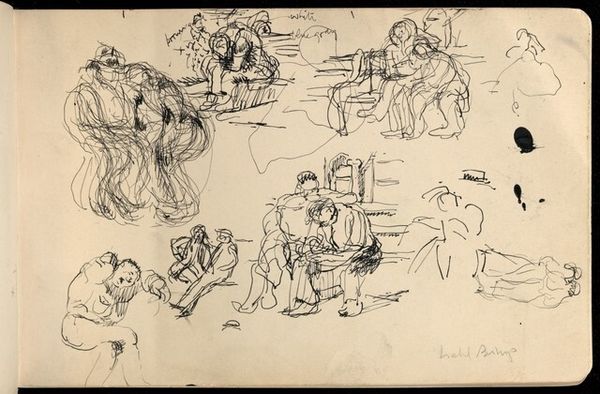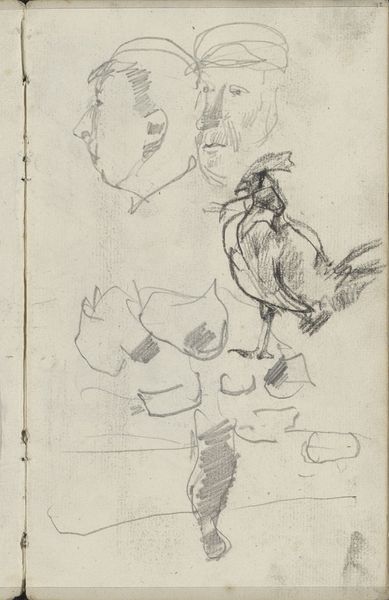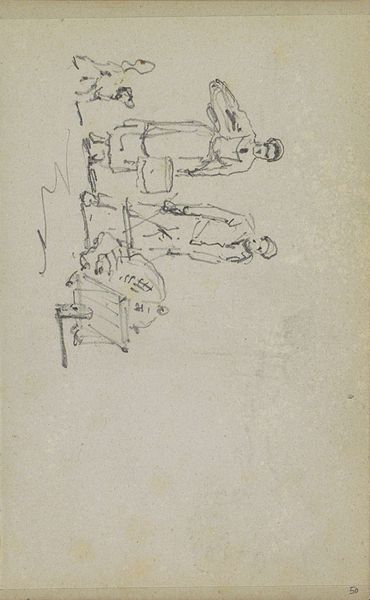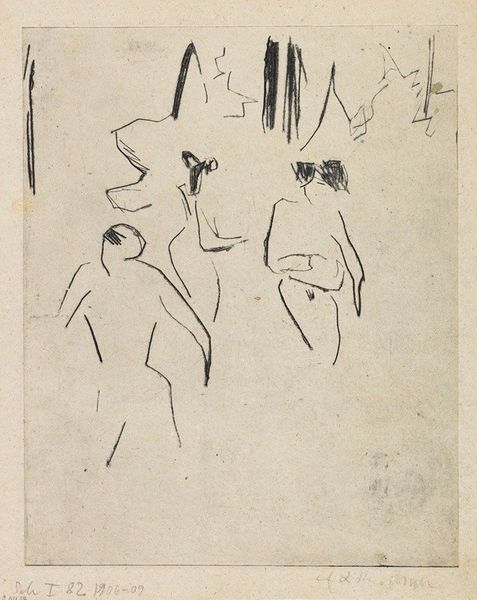
Sketches of East Asian Legendary Figures 1867 - 1889
0:00
0:00
drawing, paper, ink
#
portrait
#
drawing
#
narrative-art
#
asian-art
#
figuration
#
paper
#
ink
Dimensions: 8 x 5 in. (20.3 x 12.7 cm)
Copyright: Public Domain
Editor: Here we have Kawanabe Kyosai's "Sketches of East Asian Legendary Figures," created sometime between 1867 and 1889. It's an ink drawing on paper, currently residing at the Met. They feel spontaneous, but each character is so distinct. How would you approach interpreting this work? Curator: For me, the power lies in examining Kyosai's process. Notice the quick, confident ink strokes. It speaks to a mastery gained through years of labor, transforming the mundane act of sketching into a sophisticated form. Consider the socio-economic context. Paper and ink, while relatively common, still represent a resource. The artist's access to these materials suggests a certain level of patronage or marketability, influencing both the creation and dissemination of his art. What was the cultural value placed on sketch making in Japan? Editor: That's interesting; I hadn’t thought about access to materials influencing his art. Are you saying the *materials* themselves can change how we understand the artist's status and, maybe, even their intentions? Curator: Precisely! Think about the ink itself: Where did it come from? Who made it? These drawings are also inherently connected to a network of labor and consumption. This wasn't a solitary act, but the product of various interconnected processes, from resource extraction to artisanal production. This piece compels us to confront traditional art historical notions by embracing material analysis. Editor: I always thought about the imagery *in* a piece being symbolic but never that the medium itself carried a social story! I see this sketch in a new light now. It makes you consider where artistic choices come from, culturally. Curator: Exactly! By focusing on materiality, we're questioning boundaries between “high art” and the everyday objects. We acknowledge the work involved in crafting art. The materials carry layers of cultural and economic implications. It is exciting, no?
Comments
No comments
Be the first to comment and join the conversation on the ultimate creative platform.

